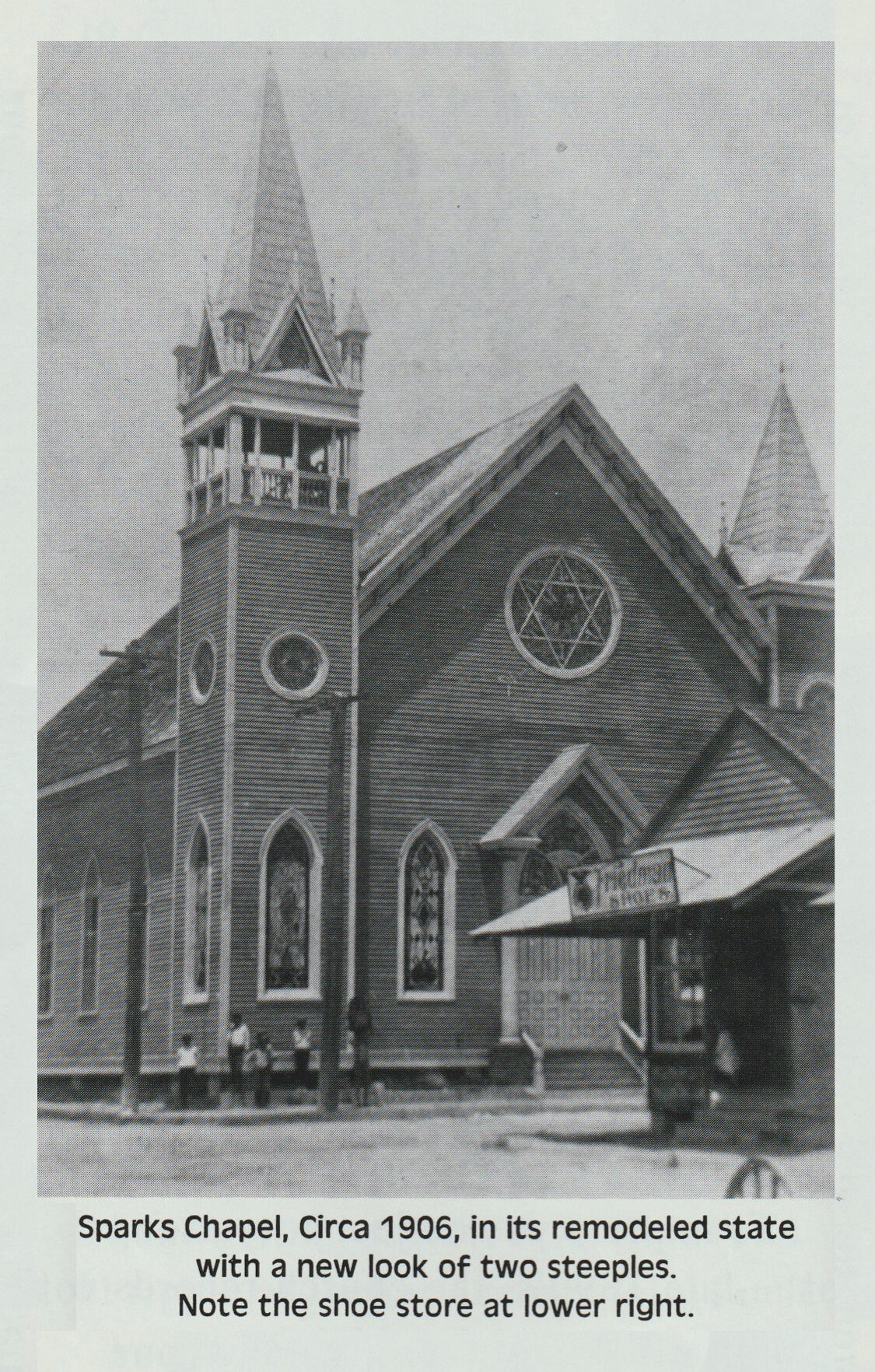History
The History of Williams Hall
The island of Key west, the southernmost of the chain of islands called the Florida Keys, was discovered by Juan Ponce de León in 1513. The first permanent settlers on the island arrived from the Bahama Islands in 1822. These settlers were the ancestors to the original founders of our church as we know it today.
One of these immigrants from the Bahamas, Samuel Kemp, brought the first trace of Methodism to the city in 1847. Kemp met with other Methodists in the hour house for the initial religious services, and later, at his own expense and with the help of friends, erected a small church on Eaton Street, near William Street. It was the first place of worship with the Methodist rite on the island.
In 1868, a group of members broke off from the original Old Stone congregation and organized their own church, which would be known as the “Short Jacket Methodist Church.” The name was due to many of the men wearing distinctive short jackets favored by sea captains at the time. Being of the same ilk as their Bahamian forefathers, who were the original “Conchs”, gave these founders at the their church, much like Key West, a rugged and independent air.
They procured a parcel of land on the corner of Fleming and William streets and erected a frame building and named it “Sparks Chapel,” after its first pastor, Rev. J.C. Sparks.
When Sparks Chapel was organized in 1868, there were 87 members and 40 children in attendance at the Sunday School. By the mid-1870s, membership grew to close to 200 people.
With growth continuing, Sparks Chapel became too small for its worshippers and they decided to build a larger chapel for worship. Construction was completed in 1887 during the pastorate of W.H.F. Roberts. The original structure would be moved to the corner of Virginia and Watson streets where it would be come the Memorial MCES. The official name of the new building on William and Fleming was changed to “Uptown Methodist Church.”
The Uptown Methodist Church would be dealt another blow at the end fo the 1800s, when lightning struck the steeple of the sanctuary. The exact damage is not documented but it’s been reported that “the building was remodeled and made very attractive both inside and out.”
The Great Hurricane of 1909 totally destroyed the church and most of the island, with wind gusts at over 100 miles per hour and recorded rainfall at an unprecedented 8.12 inches in five hours.
Exactly two years after the hurricane struck, the congregation began erecting a new and updated concrete edifice. They used funds from salvaged timbers and materials from the storm damage to finance the construction. The timbers were used in a new structure located diagonally across from the church, originally Peacon’s Grocery Story — later becoming Long’s Furniture Store, and known today as The William Fleming Guest House.
The new and beautiful sanctuary was completed in 1912. It became known as the “Fleming Street Methodist Church.” The third structure to be erected on the corner of Fleming and William, it boasts the highest ceiling on the island, with poured concrete walls 1 1/2 feet thick. The pine wood used to build the ceiling in the sanctuary was brought over from The Bahamas. The stained glass windows installed then still adorn the church to this day.
When the Fleming Street church began its mission in 1912, the church had a different look than it does today. The entry doors had been moved from the William Street side to the present location of the corner of its namesake. There was no annex addition at the time at the right side of William Street. This would be added in the mid-1940s.
The church has performed many ceremonies, such as weddings, funerals, baptisms, since its construction. The marriage of Ben and Martha Lowe in June 1918 marked the first wedding ceremony at Fleming Street Church.
In 1984, under the guidance of Rev. Charles Ketchum, the Old Island Restoration Foundation donated $2,000 for repairs to the exterior of the edifice. The funding was used to patch cracks and paint the building.
The church now known as Williams Hall has had a torrid, spiritual and pioneering history. The church was built not unlike the principles of our city and country: Rebellion that furthered the discovery of a better way to achieve life’s most paramount objectives.












